Epsom salt, which is also called magnesium sulphate in chemical terms, is a multi-purpose mineral that if applied rightly can improve the growth of plants. This compound is important for photosynthesis, production of chlorophyll, and nutrient absorption; hence, it benefits gardeners who want to enhance their plant’s health and yields. In this blog post, we will discuss why Epsom salt is useful, give you a step by step guide on how to use it effectively and answer some popular questions people ask about it. By knowing how to apply Epsom salts properly, one can take advantage of its properties to ensure that his or her garden thrives with healthy vigorous growth.
What is Epsom Salt and Why Should You Apply It to Plants?
Magnesium sulfate or Epsom salt is composed of magnesium, sulfur and oxygen. Magnesium enrichment in plants facilitates their photosynthesis, improves nutrient absorption and make cells stronger. Using Epsom salt will cure the lack of magnesium which results into green leaves then increased fruits as well as blooming flowers. Additionally, sulphur from Epsom salt aids in protein synthesis and enzyme activity. Thereby, right application of this product enhances plant health hence a great tool for gardeners who want to increase plant’s vitality and productivity.
Understanding the Composition: Magnesium and Sulfur
Chlorophyll formation (the green pigment necessary for photosynthesis) depends on magnesium (Mg). Limited supplies of this mineral lead to inefficient sunlight utilization by plants hence chlorosis or yellowing of the leaves occurs. Mg is also required in activating numerous plant respiration and metabolic enzyme systems. It should be noted that soil concentration levels should range from 25-50ppm for optimal uptake.
Sulfur (S) on its part helps in making essential amino acids, vitamins, proteins etc. This element promotes vigorous growth of plants thus enhancing their disease resistance capabilities. Sulfur gets absorbed as Sulfate (SO42-) whose ideal concentration in the soil ranges between 10 -30 ppm. Plants exhibit stunted growth due to the poor function of proteins when there is insufficient sulfur to produce them. By maintaining these specific parameters, gardeners can ensure their plants receive the essential nutrients they need for healthy development.
Benefits of Epsom Salt for Plants
Epsom salt comprises magnesium sulfate (MgSO4) which has several advantages when applied to crops. First it is worth noting that Magnesium is needed in chlorophyll synthesis so as to enhance photosynthetic efficiency. It should be concentrated at levels between 25-50 ppm within the soil for optimum absorption and functionality.Magnesium deficiency causes chlorosis, which affects the plants’ overall vitality. Secondly, sulfur is essential for enzyme activity and protein synthesis with soil concentration ranging from 10-30 ppm (parts per million). Sulfur is absorbed as Sulfate (SO42-) which enhances disease resistance hence this element allows for healthy growth. Therefore, both these elements found in Epsom salt address crucial nutrient needs hence its effectiveness in improving plant vigor and productivity.
Common Misconceptions About Epsom Salt
The most common misunderstanding about Epsom salt is that it can be a panacea for all plant diseases. While it does contain magnesium and sulphur, Epsom salt is not the magical cure for everything. Overusing it could lead to nutrient imbalances within the soil, thus doing more harm than good. For example, an excess of magnesium interferes with the uptake of other important nutrients like calcium or potassium. The correct magnesium levels should be maintained at 25 to 50 ppm while sulfur should be between 10 to 30 ppm specific soil parameters must be observed. Additionally, another fallacy commonly attributed to using Epsom salts on plants directly implies that they are fast acting remedies. However realistic use depends on the prior status of soil nutritive content as well as plant species involved thus best results may only come after a soil test based application.
How to Apply Epsom Salt to Plants
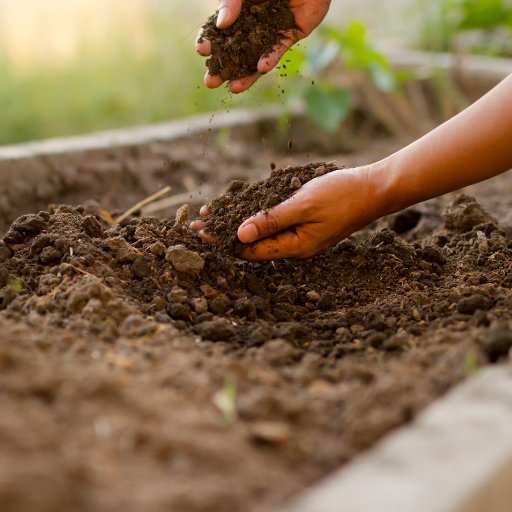
Applying Epsom salt to plants can be effective provided you start by performing a soil test to determine the current nutrient levels. For most plants, dissolve one tablespoon of Epsom salt in a gallon of water and apply the solution directly to the soil at one-month intervals. For foliar spraying, mix two tablespoons of Epsom salt in a gallon of water and spray the leaves uniformly ensuring that they are even. This is because it aids faster absorption enabling magnesium-deficient plants to recover. Vegetables and roses should be sprinkled with one tablespoon of Epsom salt per foot of plant height at their base, directly on the ground. After application, water thoroughly to facilitate nutrient uptake.
Always monitor your soil and plant health so as to adjust dosages for optimal results.
Ways on How To Sprinkle Epsom Salt on Soil
Sprinkling Epsom salts on your soil can help alleviate magnesium deficiencies if done appropriately. 1.Firstly, carry out a soil test to know what your plants require specifically and also about the present nutritional status of your soil. Spread lightly over garden area at about 1 tbsp./sq ft (Reference). The rate for targeted specific supplementation is approximately one tablespoon which should be put around the base of the plant being careful not to touch stem as this could cause damage (Ecochem). A broadcast spreader can be used if there are large areas or garden beds that need treating with Epsom salts (Ecochem). After applying, wet thoroughly so as to dissolve salts more effectively into the earth making it possible for them top get absorbed into roots better (Ecochem). Keep testing regularly alongside monitoring progress towards optimum growth rates hence make any needed changes.
Adhere strictly to specified dosage since overdosing will disturb other vital minerals’ equilibrium within soil.
How To Dilute Epsom Salt in Water
To dilute Epsom salt in water, first measure out the appropriate amount of Epsom salt as desired. For garden plants, one tablespoon of Epsom salt per gallon of water (Epsom Salt Council). Stir the Epsom salt completely into the water with a spoon or another object before dissolving it in a clean container or watering can (De Vries 56). Therefore, make sure that your water’s temperature is either lukewarm or at room temperature so as to help dissolve it easily (De Vries 57). Apply evenly on plants’ leaves using spray bottle for foliar applications. Do not over saturate soil by pouring solution around the base of plants when making a soil drench application. Regular weekly or bi-weekly applications may be beneficial depending upon needs of plants indicated through regular monitoring and soil testing. In order to verify that there is supplementation need and also determine how often you will need to provide supplemental magnesium after getting results back from soil test.
Spraying Epsom Salt on the Leaves: How to Do it
- Making the Solution: Start by dissolving a tablespoon of Epsom salt in one gallon of water. Use warm or room-temperature water to dissolve the salt properly.
- Pour into Spray Bottle: Empty the solution you made earlier into a clean spray bottle, ensuring there aren’t no traces of the old contents that can react with your new mixture.
- Spray Test: Before spreading over all plants, perform a test spray on a small area to eliminate all adverse effects. Observe the plant for 24-48 hours and make sure it responds well.
- Application: Spray the leaves of this crop using this solution so that it coats them evenly. Foliar spraying is best early in the morning and late evening since evaporation is minimum and absorption is maximum.
- How Often: Apply Epsom salt spray once every seven days.Watch for signs of recovery in your plants and change how often you use Epsom salts depending on the specific needs of each species and the conditions in which they grow.
- Safety Measures: Always wear gloves and safety goggles when applying this solution to avoid irritation.Put away whatever remains safely out children reach or from pets’ access after completion.
How Much Epsom Salt Should You Use for Different Types of Plants?
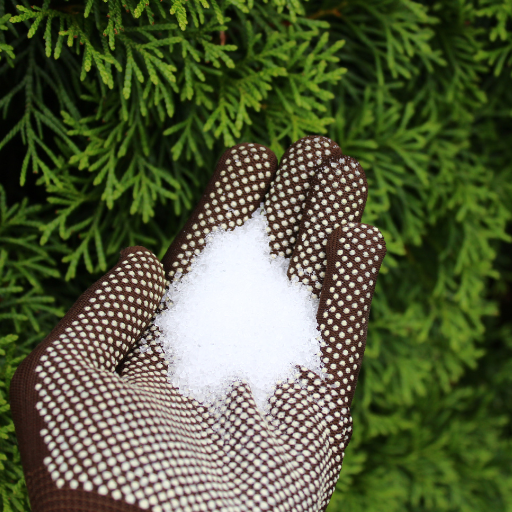
Epsom salt amounts required vary with the type of plant and its specific needs as follows:
- Vegetables: For general vegetable gardening, dissolve 1 tablespoon of Epsom salt in 1 gallon of water. Water your plants once a month to promote growth.
- Houseplants: Mix one teaspoon of Epsom salt per gallon of water and use this solution on your foliage every month.
- Tomatoes: Tomato plants generally need 1 tablespoon Epsom salt for each foot of height applied every two weeks. The salt is added to water and poured around the base of the plant.
- Roses: To boost blooming, apply dry Epsom salts at the rate of one (1) tablespoon per foot around rosebushes about once a month during the growing season.
- Lawns: On a larger scale such as lawns, apply three (3) pounds of Epsom salts per 1250 square feet alternatively called Lawns can be spread throughout using a lawn spreader then thoroughly watered for soil absorption.
Remember that you have to adjust application based on soil test results and specific crop requirements to avoid nutrient imbalances,
Application Of Epsom Salt To Tomato Plants
The standard recommendation when applying Epsom salt to tomato plants is 1 tablespoon/foot/plant height every two weeks; this dosage promotes healthy strong growth by providing magnesium and sulfur which are important components needed for photosynthesis and nutrient uptake respectively; suggested application involves dissolving measured amount in water, making sure it mixes well before pouring solution next to plant’s base; this helps prevent common problems like lack-of-magnesium-induced yellowing leaves or poor fruit set; regular applications adjusted according to soil conditions and plant requirements will ensure healthy vigorous tomato plants that will produce good yields.
Using Epsom Salt for Potted Plants
When using Epsom salt on potted plants, it’s important to avoid over-fertilization by using correct dosage. On average, mix 2 tablespoons of Epsom salts in a gallon of water. The solution is then used to water the potted plants once a month. This combination provides the essential magnesium and sulfur that promote strong stem growth and enhance nutrient uptake by other minerals in the plant. Observe plants for any signs of nutrient deficiency or toxicity surfaces; adjust frequency or concentration as required. This approach maintains well-nourished potted plants that have colorful leaves and blossoms.
Recommended Amounts for Roses and Flowering Plants
For roses, use 1 tablespoon of Epsom salts per foot of plant height applied every two weeks during the growing season; this can be done either through direct sprinkling at the plant base or by dissolving it in water for easy absorption into the soil. For other flowering plants except for roses, use one tablespoon/one gallon of water once a month; this program will supply necessary magnesium plus sulphur that helps the plants grow vigorously bloom profusely with good health overall; always check how individual plants respond to such adjustments based on specific soil conditions as you monitor your crop periodically thus guaranteeing success.
When and How Often Should You Use Epsom Salt in the Garden?
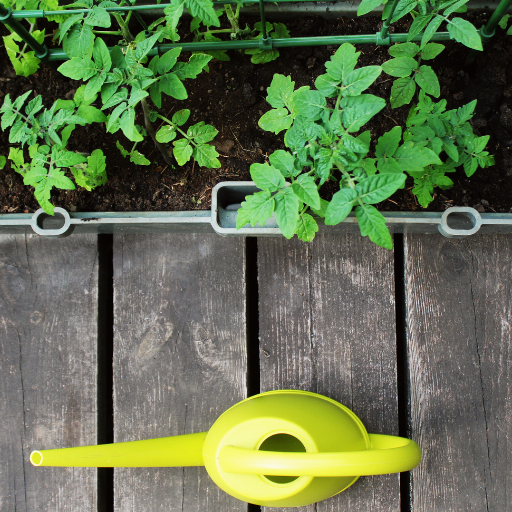
When using Epsom salt in the garden, it is important to know when and how often it should be applied to give maximum effectiveness without harming plants. In general, Epsom salt is used during growing seasons, usually from early spring to late summer, for most crops. An initial application can be made when planting seeds or seedlings by mixing Epsom salt into the soil or watering solution for early growth stages. Subsequent applications ought to be spaced out every four to six weeks throughout the growing season. This schedule helps plants secure a constant supply of magnesium and sulfur, essential for various physiological functions. And as usual, one must keep an eye on plant health and soil conditions frequently while making adjustments by specific plant needs and environmental conditions. Furthermore, some plants, particularly those that benefit from supplementary magnesium might require more frequent applications while others may do better with less than the required dose.
Frequency of Application: Weekly, Monthly, or Seasonally?
The type of plant and its specific soil magnesium requirements are some of the key things that need to be considered when determining the appropriate frequency at which Epsom salts should be supplied. For most garden plants, including vegetables, roses, and houseplants, a monthly application of Epsom salts is usually recommended based on information from leading Horticultural sources. The ratio of 1 tablespoon per gallon of water suffices for nutrient supply without over-fertilization.
In potted plants on the other hand, it could save them if you dilute this down to once every six weeks due to space limitations that cause accumulation of nutrients among other factors which may happen in these pots or containers but not directly within open gardens. On the contrary, tomatoes, peppers, and roses, which are known as heavy feeders, will benefit more from more frequent applications, maybe fortnightly in their peak growth periods; therefore, concentration should be adjusted down by half when doubling up treatments in order not to let too much salt accumulate around the plants which is detrimental for their welfare.
Such regular seasonal applications may also be appropriate to help perennial plants boost on their nutrient reserves mainly in early spring and late autumn. This prepares them well for upcoming growing seasons as well as helps them recover in case of any harvests. Gardeners can achieve optimum health and productivity by adjusting the frequency of application to suit different plant types, growth stages, and environmental conditions that exist within his or her garden.
Optimal Times to Apply Epsom Salt for Best Results
Early morning and late afternoon are universally recognized as the best times to apply Epsom salts. At these times of day, it is cooler, with less evaporation, so more nutrients can be taken up by plants. Application during the morning hours allows a plant to use a nutrient all throughout the day, while late evening absorption will take place, giving time for leaf burn overnight.
Moreover, the efficacy of Epsom salt application depends on the stage at which a given plant is. For seedlings and young plants, applications should be timed during the early growth stages to support robust development such as when they are just beginning to germinate from seeds. In general mature plants flower mostly in their peak growth periods which usually coincide with their highest nutrient demands implying that such flowers benefit most from application at such times.
When talking about heavy feeders such as tomatoes and peppers, applying Epsom salt every two weeks during active growing and fruiting stages is advisable. However, a monthly program is adequate enough for the average garden plants. This time is early spring for perennial plants to support new growth and post-harvest to replenish nutrient reserves.
Monitoring Plant Response to Epsom Salt Application
Precision monitoring of plant response to Epsom salt application is important if you want optimum results without side effects. It is better to look at visible indicators like increased leaf color improved growth rate and general health of the plants. One should always check for deep green foliage, which shows that magnesium uptake is effective, while yellowing leaves may indicate low or imbalanced nutrient levels.
Measuring soil pH and magnesium levels before and after applying Epsom salt provides quantitative data regarding its technical performance. A pH meter can be used to determine ideal soil conditions, with most garden plants thriving between pH 6.0 and 7.0. Magnesium concentration can also be quantified using a soil test kit or laboratory analysis, with normal levels averaging 25-50 ppm(parts per million).
Regularly keeping records on plant height, leaf size, and number of blooms or fruits can also help reveal how much impact Epsom salt has had. Comparing these over time will assist in adjusting your schedule so that you only use what you need.Even though over-application can result in nutrient imbalance, moderation and consistent observation are key in optimizing plant healthiness and productivity.
Are There Any Risks or Drawbacks to Using Epsom Salt on Plants?
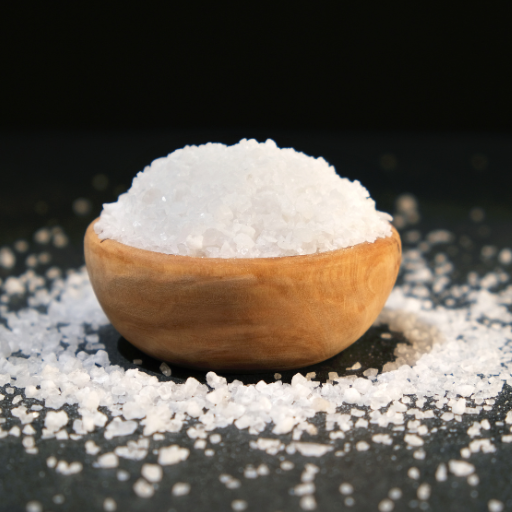
Though Epsom salt has its benefits, it also carries several risks and downsides that should be considered. An overdose of the substance can cause magnesium to accumulate in the soil, preventing other necessary nutrients such as calcium and potassium from being taken up by plants, thus creating a nutrient imbalance. The accumulation of magnesium in soils results in high soil salinity that retards the growth of plants and spoils the fertility of soils. Besides, using Epsom salt on alkaline soils with adequate magnesium content may not be very beneficial or may even backfire. The application should, therefore, be preceded by soil testing to determine if there are any underlying problems.
Signs associated with over use or toxicity
Excessive usage of Epsom salts usually leads to several signs of plant stresses and soil toxicities. One major symptom is leaf yellowing starting at the margins moving centrally; this indicates an imbalance in magnesium content within the leaf. Additionally, stunted growth coupled with a reduced bud or fruit production might arise due to excess magnesium, which interferes with the uptake of other essential nutrients like calcium and potassium. Technical as well as antagonistic interaction between Mg2+ Mg2+ and these nutrients within both soil and rooting systems; hence this situation.
The level of salinity found within a particular field is a determinant for efficient farming practices carried out on it. There is a possibility that addition of extra magnesium into the soils results into higher overall salt concentration levels thereby hurting plant development processes at large. Plants become less capable of absorbing water under salty conditions, leading to wilting, burnings on leaves, and ultimately death if not corrected otherwise.The soil electrical conductivity (EC), a measure of its salinity should ideally range between 1-3 dS/m (deciSiemens per meter) for most garden plants Soil testing for EC values can help mitigate this risk.
In addition, frequent application without prior tests could disguise symptoms from other deficient minerals. This creates a misleading picture of the soil health and may cause long-term issue with plant nutrition and soil structure. It is therefore necessary to apply moderately and carry out regular checks on the state of plants and soils so as to avoid such a problem due to using Epsom salts.
Plants that do not benefit from Epsom salt
On the other hand, there are some plants which might not be helped by adding Epsom salt in their farms since they have unique nutritional requirements and specific preferences for soil. For instance, acidic-loving plants like azaleas, rhododendrons, and blueberries do not need any magnesium sulfate. These plants require acidified conditions in the ground; hence, magnesium sulfate interferes with maintaining this balance, leading to an imbalance of nutrients.
Furthermore, succulents and cacti that grow well in nutrient-poor soils generally don’t receive any advantage from applying Epsom salt. This is because they have adapted themselves to making efficient use of limited nutrients found in their natural habitats; thus, high magnesium levels can interfere with normal methods of nutrient assimilation for these organisms.
Additionally, certain crops, such as sage, rosemary, and thyme, are effective at absorbing Mg within them and do not gain much from external sources of Mg. These herbs have mechanisms through which they regulate their own magnesium levels and application of Epsom salt could potentially lead to nutrient toxicity.
How to Conduct a Soil Test for Magnesium Deficiency
Doing a soil test for lack of magnesium is no simple matter, and accuracy can only be achieved through several systematic steps. First, it is necessary to collect soil samples from different points in the garden or field that are taken six to eight inches deep using a clean tool with no rust. Mix these samples in a clean bucket thoroughly so that you end up with a composite sample representing the whole area. Subsequently, spread this thin layer of soil sample over a clean surface and dry it at room temperature taking care not to do so close to chemical and fertilizer contaminated areas. When dried, transfer it into a clean container with proper labeling and take it to any reliable soil testing center with clear instructions for checking its magnesium levels. The laboratory will use different methods, such as atomic absorption spectroscopy or ICP-OES, hence providing an elaborate account of the level of magnesium existing in the soil.
Integrating Epsom Salt into Your Gardening Routine
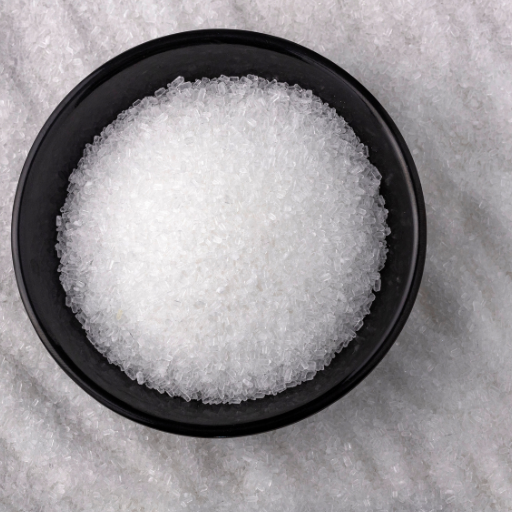
When integrating Epsom salts into your gardening routines, it is important to ensure that they are used well to avoid nutrient imbalances. To use generally, dissolve a tablespoon of Epsom salts in one gallon of water and then pour the solution onto plants at the onset of every month while ensuring even distribution around the base. For leaf application, a gallon of water should be mixed with one tablespoonful of Epsom salt inside a spray bottle; this moistens leaves and makes magnesium get absorbed faster. Always carry out soil tests before using Epsom salt, especially when dealing with magnesium-sensitive crops or those grown under conditions where low magnesium levels are required.
Combining Epsom Salt with Other Fertilizers
To optimize plant growth through specific nutrient deficiencies, combine Epsom salt with other fertilizers. When adding Epsom salt to your fertilizer program, consider the amount of sulfur and magnesium supplied by this product and how it supplements other nutrients found in your current fertilizers. For instance, incorporation of epsom salts will help raise the level of magnesium in case you are using nitrogen-phosphorous-potash (NPK) fertilizers without affecting their balance. One way is to mix 1-2 tablespoons per gallon when combined with liquid fertilizers such that they must be thoroughly stirred before being applied on plants. Thus caution should be taken not to over-fertilize since technically, its magnesium content (which stands at approximately 9.8% Mg) and Sulfur content (about 13% S) must be considered for purposes avoiding over-fertilization Regular soil tests should therefore be carried out so as to monitor nutrient levels and apply respective amounts appropriately to avoid toxicity or lockout situations where applicable . This integration should recognize especially sensitive plants that could end up showing severe signs as a result of excess magnesium which may impede calcium’s absorption among essential elements.
Adjusting Watering Practices When Using Epsom Salt
When adding Epsom salt to your gardening routine, you must adjust watering practices to maximize nutrient uptake and plant health. As such, before applying it into the soil, one should ensure that Ebsom salts are well dissolved in water to avoid the build-up of salt in the soil which could lead to root-drying as well as nutrients imbalances. The recommended application ratio is between 1-2 tablespoons for each gallon of water concerning Epsom salt. Pour this solution on the soil around the base of plants but not on leaves . This should be done depending on the specific needs of particular species or growth stages; for example, most garden plants would only require monthly applications. Consequently, overuse can result in too much magnesium, interfering with the intake of other important minerals like calcium; thus, regular soil tests are advised for tracking Mg levels and avoiding any possible lockout or toxicity due to nutritional imbalance. Moreover, during wet periods with heavy rains reduce or skip use of Epsom salts as a precaution against excess moisture and leaching out essential nutrients like potassium and nitrogen; while they may be needed during dry spells
Long-Term Benefits and Observations
Long-term-wise, Epsom salt can be included in agricultural practices when properly handled to bring a range of advantages. Its regular use has been noted to promote improved general health for plants through the development of foliage that is green and luxuriant as well as flowers and fruits. The main reasons for this are its magnesium and sulfur content, which are important for photosynthesis and synthesis of major plant nutrients. Additionally, there have been cases where the seed germination rate is high while chlorophyll production is increased, leading to strong, healthy plants. Nevertheless, these merits only accrue if one maintains proper monitoring coupled with the right application rates to escape the danger of nutrient imbalance. Regular soil testing mentioned earlier on will assist in keeping magnesium levels at their optimum level thereby ensuring continuous growth as well as plant health.
Reference sources
Frequently Asked Questions (FAQs)
Q: How do you use Epsom salt for plants?
A: To use Epsom salt for plants, dissolve one tablespoon of Epsom salt per gallon of water and use this solution to water your plants. This mixture provides essential nutrients such as magnesium and sulfate, which can help improve plant growth.
Q: How often should you use Epsom salt on your plants?
A: It is generally recommended to add Epsom salt to your watering routine once a month. However, specific plants or conditions might require different frequencies, so it’s best to consult with the National Gardening Association or a local gardener for tailored advice.
Q: Can Epsom salt help plants grow bushier?
A: Yes, Epsom salt can help plants grow bushier by providing essential magnesium, which aids in chlorophyll production and enhances nutrient uptake, resulting in healthier, fuller plants.
Q: What is the correct amount of Epsom salt to use per gallon of water?
A: The standard recommendation is to use one tablespoon of Epsom salt per gallon of water. This concentration provides adequate nutrients without overwhelming the plants.
Q: Is Epsom salt good for all types of plants?
A: While Epsom salt is beneficial for many plants, it is not suitable for all. Some plants may not respond well to the added magnesium sulfate. It’s important to understand each plant’s specific nutrient needs before adding Epsom salt to their regimen.
Q: How does Epsom salt benefit pepper plants?
A: Epsom salt contains magnesium, which is vital for pepper plants. It helps improve the overall health of the plants, supports chlorophyll production, and can lead to better fruit yields when used appropriately.
Q: Can Epsom salt help with soil deficiencies over time?
A: Yes, adding Epsom salt to soil can help correct magnesium deficiencies. Over time, this can improve the soil quality and enhance nutrient absorption, contributing to overall plant health and growth.
Q: Are there risks if plants don’t like Epsom salt?
A: If plants do not respond well to Epsom salt, they can exhibit symptoms such as leaf burn or nutrient imbalance. It’s crucial to start with a small amount and monitor the plants’ response, adjusting as needed.
Q: What is the role of magnesium sulfate in plant growth?
A: Magnesium sulfate, the primary component of Epsom salt, plays a significant role in plant growth. It aids in chlorophyll production, which is essential for photosynthesis, and helps plants absorb other crucial nutrients more efficiently.
Q: How do you apply Epsom salt to help plants bloom?
A: To help plants bloom, dissolve one tablespoon of Epsom salt in a gallon of water and apply it to the soil around the plants. This helps provide the necessary magnesium for flower production and overall plant health.






